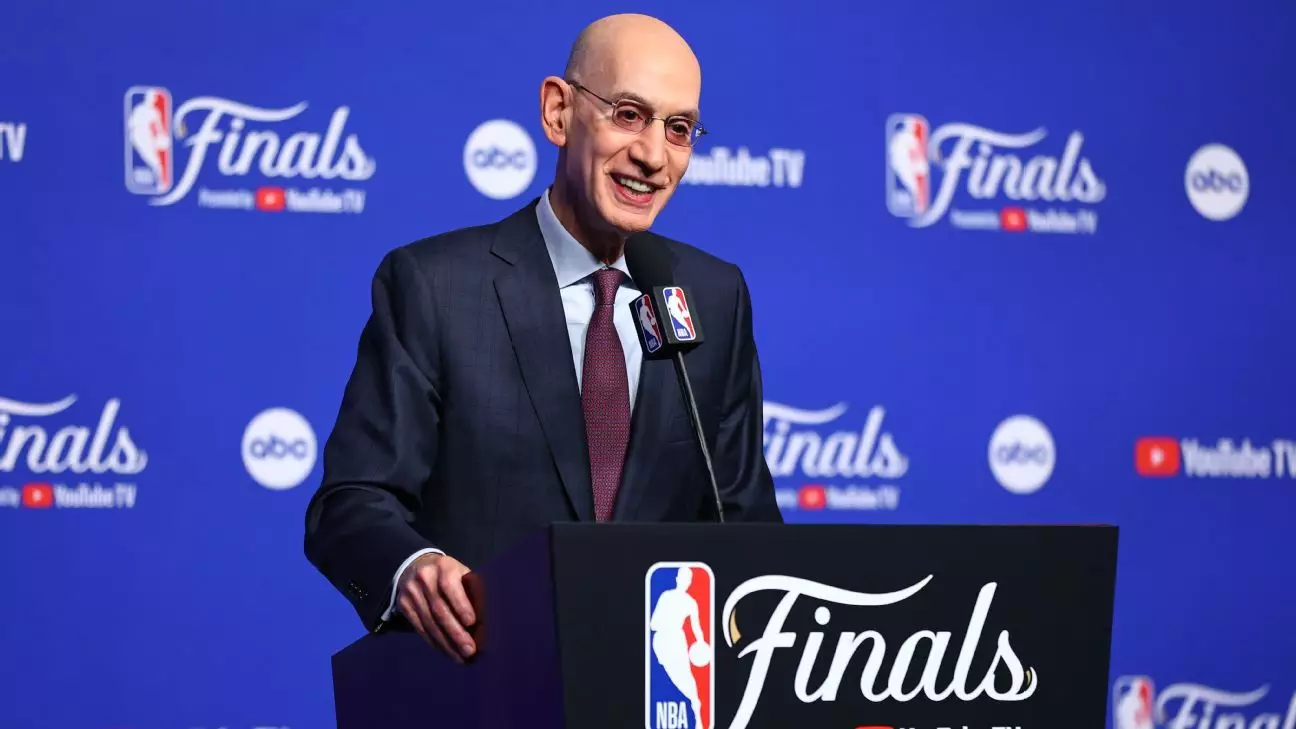In an exciting announcement, NBA Commissioner Adam Silver revealed the league’s intentions to discuss expansion during the upcoming board of governors meeting in Las Vegas. This revelation raises the intriguing possibility of a new era for the NBA, one characterized by growth and increased competitiveness. Silver, at a press conference adjacent to the NBA Finals, expressed optimism that the league’s owners would favor the exploration of this agenda. He showcased a keen desire to gauge the collective sentiment among owners, emphasizing that there has been no dearth of interest in expansion discussions.
The potential expansion seems aimed not just at growing the league’s portfolio, but also at addressing the needs of untapped markets across the United States and beyond. As Silver pointed out, there are indeed underserved regions that merit the thrill of professional basketball. Cities like Seattle and Las Vegas have been highlighted as frontrunners in this new chapter of NBA expansion, thus igniting conversations about the long-term implications for the league and the communities involved.
Unearthing Untapped Potential
The opportunity to add new franchises is not merely a business venture; it represents a chance for cultural enrichment and local engagement through sports. With basketball’s global appeal continuing to rise, the NBA has the potential to cultivate a deeper connection within these communities. Silver’s intention to involve outside advisers when assessing viability emphasizes the seriousness of this initiative. By examining market dynamics, economic growth prospects, and media opportunities, the NBA appears committed not just to growing its brand, but to making informed choices that benefit the league and its prospective cities.
This initiative marks a significant shift from the last time the NBA expanded in 2004, when the Charlotte franchise was reestablished. The current climate, characterized by fan engagement and technological developments, offers a fertile ground for expansion, promising new rivalries and fanbases to enhance the league’s theatrical performances. Silver’s cautious optimism also acknowledges that he must tread carefully; while he recognizes the excitement around expansion, it’s paramount to consider the pre-existing franchises and the ethos of the league’s integrity.
Parity in Competition: The Delicate Balance
During the conference, Silver also highlighted the phenomenon of having unique champions in recent years, a narrative that suggests thriving parity in the league. The NBA Finals’ format has led to a fresh landscape, sparking conversations around equality in competition. While some might argue this dilution of dominant teams compromises tradition, Silver emphasized that the goal is not solely to create diverse winners but to foster an environment of equal opportunity. The admittance that having multiple franchises as potential champions doesn’t detract from the competition but enriches it is a refreshing perspective in the world of sports, which often clutches tightly to legacy.
Ultimately, the excitement around potential new champions and franchises adds uncertainty and thrill to the league. Silver acknowledged this unpredictable landscape, citing the successes in franchise management by teams like Oklahoma City and Indiana. Their apparent success serves as evidence that fostering a parity-rich environment could yield rewarding outcomes, drawing in new talent and nurturing a rich competitive spirit, which could mirror or even enhance modern basketball dynamics.
Future of All-Star Events and Season Structure
In addition to expansion discussions, Silver touched on reshaping the NBA All-Star Game. There’s speculation surrounding the notion of an international team-based format, reminiscent of initiatives taken by the NHL. Engaging the fanbase and conjuring national pride through a celebration of the talent from around the world aligns well with the NBA’s dedication to growing the sport internationally. The move to NBC for the All-Star Game adds another layer of intrigue, with Silver tapping into the sports cultural zeitgeist, particularly as the league intertwines with Winter Olympic festivities.
Moreover, the conversation about the infamous 82-game season captures attention. Silver’s steadfastness against reducing the regular season reflects the complexities of NBA economics and the dedication to maintaining brand integrity. While the league faces scrutiny regarding player injuries, the data does not support the notion that fewer games would correlate with reduced injury rates. His pragmatic approach emphasizes that the NBA must balance profitability with the vitality of the game itself.
The road ahead may be fraught with challenges and decisions that require strategic foresight, yet the potential for NBA expansion and a reinvigorated play format reflects a bold commitment to the evolving landscape of basketball. The focus now rests on executing these ambitious ideas within the framework of fairness and excitement that fans expect from their beloved league.


Leave a Reply